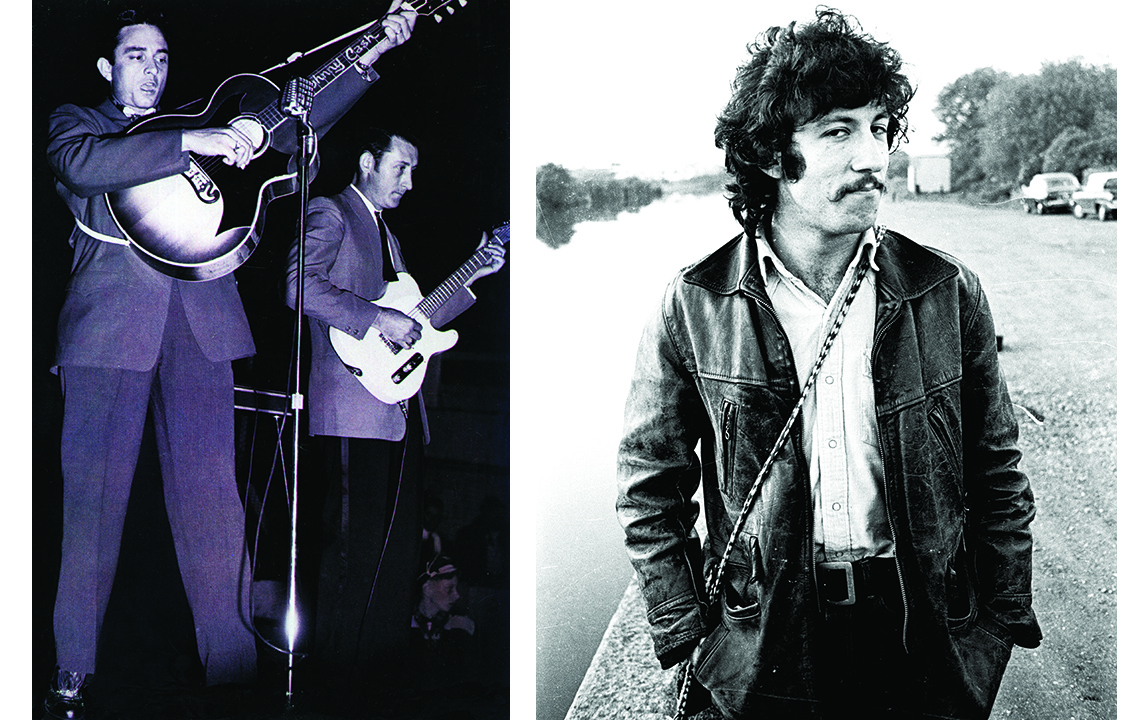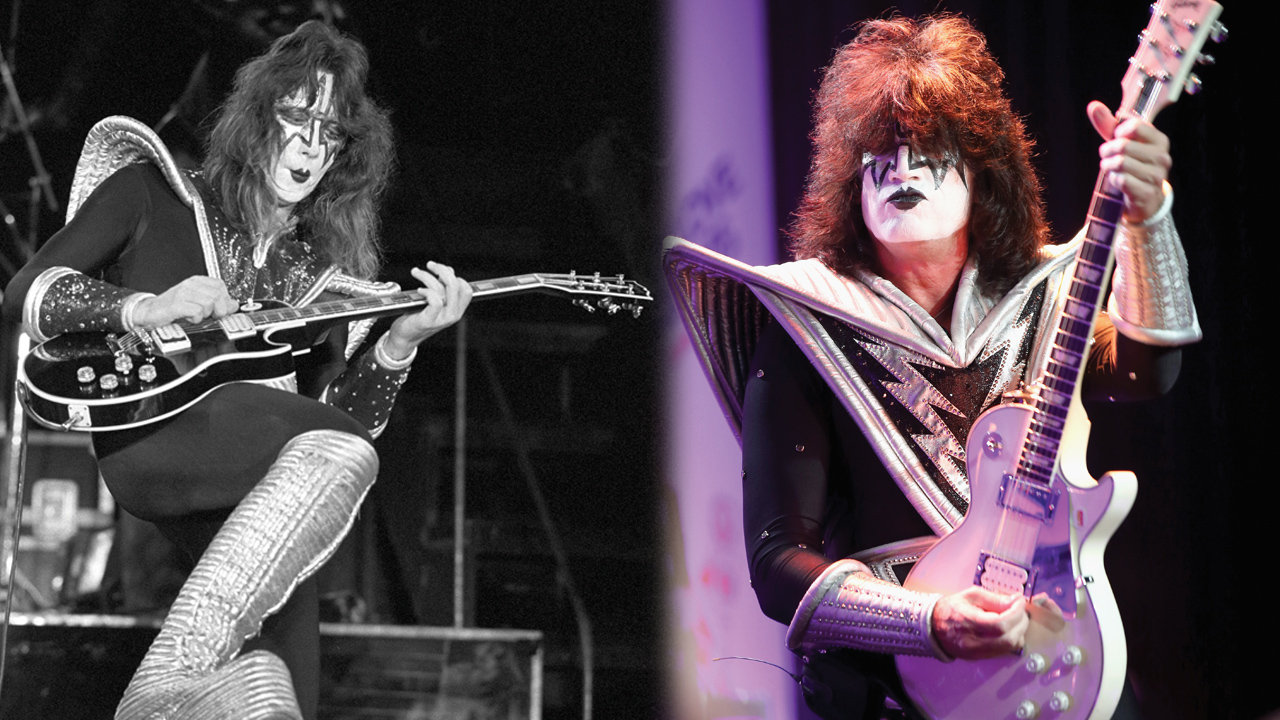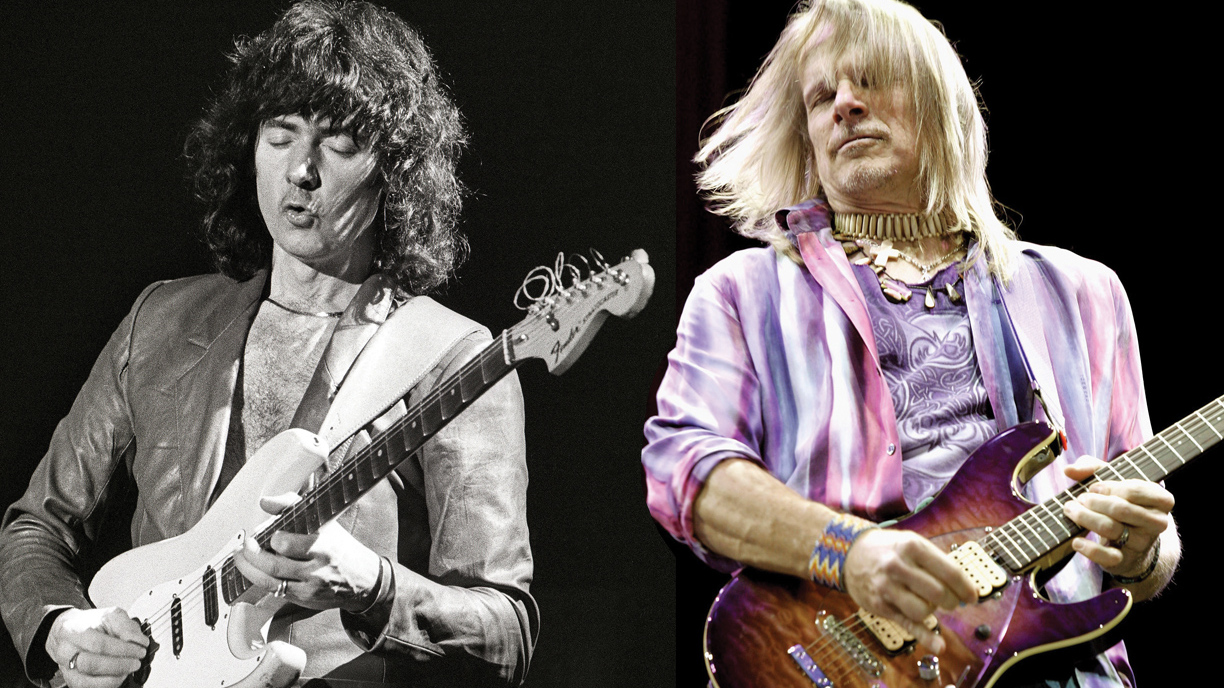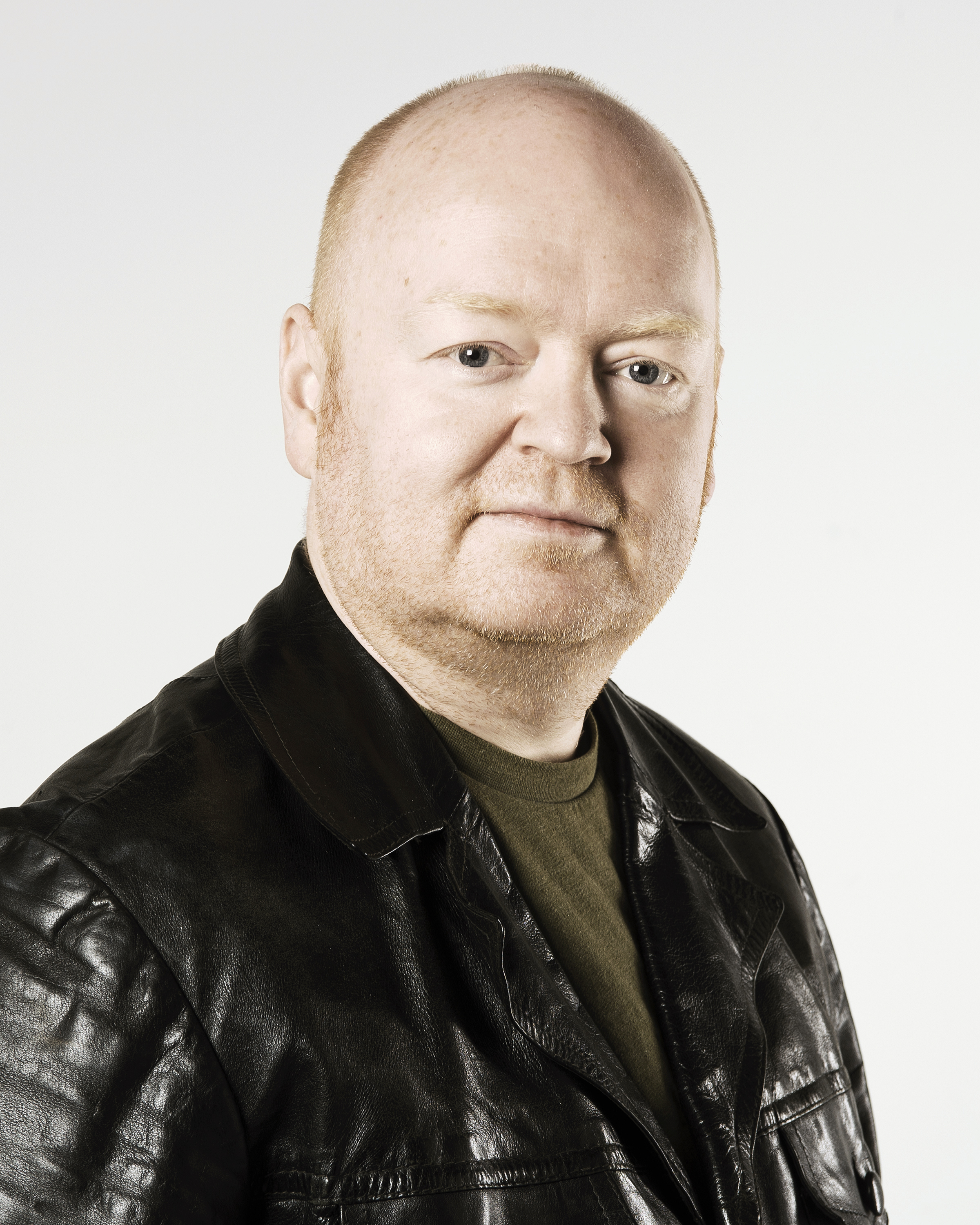“Where’s Luther, Johnny?” It’s February 24, 1969 at San Quentin State Prison in California. As Johnny Cash and his entourage blast through the set ultimately released as the iconic At San Quentin album, a member of his captive audience notices that Cash’s long-time guitarist Luther Perkins is conspicuous by his absence. The stark reality is that Perkins, the Fender Esquire-brandishing icon who pioneered Cash’s trademark ‘boom-chicka-boom’ sound on the 45s they cut with bassist Marshall Grant at Sun Studio in Memphis in the 1950s, is dead. While Cash never truly came to terms with his friend’s death, in a house fire on August 5, 1968, sonic salvation came in the figure of a young truck driver called Bob Wootton, a Perkins disciple who, pushed into an impromptu audition with Cash by his girlfriend at a show in Fayetteville, Arkansas, was soon offered the job of taking Luther’s trademark solos.
“We’re sorry to say that, er, Luther passed away seven months ago, after being with us for thirteen years…” said Cash in reply to the shout-out from the San Quentin inmate. “The fella that is playing the guitar with us now is doing a wonderful job but, of course, nobody can really replace Luther.”
Bob Wootton’s overnight change in fortune wasn’t the first time the question ‘How do you replace a lead guitarist who is considered irreplaceable?’ was answered. And where do you get the balls to play someone else’s solos anyhow?
Due to the longevity of classic rock bands it was inevitable that more guitarists would be called upon to replace the fallen. People die. Old friends fall out. Yet the show must go on.
When Peter Green took over from Eric Clapton in John Mayall’s Bluesbreakers in late 1966, he dealt with the inevitable backlash by simply outplaying his predecessor. Suddenly, the faithful weren’t missing Eric any more.
When a band gets broken, sometimes, like Green you’re the cure. Sometimes, you’re the sticking plaster, the temporary fix. For example: to many, the idea that Richie Sambora would actually bail on Bon Jovi was unthinkable, never mind the notion that someone would dare try to take his place. In the end The Drills frontman Phil ‘X’ Xenedis was charged with making his guitar ‘talk so tough’ when Sambora chose to stay at home. Unfortunately for Xenedis, you don’t get to rewrite the lead guitar parts on Livin’ On A Prayer. Solos of that calibre are woven into the fabric of a song. “When you’re a hired gun your level of creative input is limited,” Xenedis commented. “Even when I toured with Bon Jovi I couldn’t be Richie, because I’m not. But I couldn’t really be me. So I became this guy in the middle somewhere who was between the two.
“When I did the first thirteen shows with Bon Jovi in 2011, I played in St Louis, the last show, and Jon asked me to sing the last verse of Wanted Dead Or Alive. And it was in front of 20,000 people. When I came home I played at The Roxy with The Drills. And to me it was as exciting – 200 people, my songs, doing my thing, with people in the front freaking out.”

Phil X is an outstanding guitarist – and he’s not the only one who thinks that. He just isn’t Richie Sambora, even if he can play his licks without breaking sweat. Bob Wootton is a far more technically gifted lead guitarist than the man he replaced, but he can’t ever be Luther Perkins. For a stubborn percentage of a band’s fan base, that’s always going to be a big problem. And if they can’t have the original guitarist, they at least expect a hired gun to nail the solos as they were played on the original records.
For Deep Purple guitarist Steve Morse, there was never any question he was going to be some Ritchie Blackmore tribute act when he joined the band in 1994. And Ohio-born Morse was relieved to find that’s not what Deep Purple were looking for when bassist Roger Glover came a-knocking.
“Roger is a very eclectic guy,” says Morse. “And rather than trying to find a close replacement for Ritchie style-wise, he was looking for more of a writer than just a guitar replacement, ’cos Ritchie was a big writer in the band.”
On paper, Morse is an odd choice to replace Blackmore. Morse is a country, jazz, southern rock and bluegrass cat, while Blackmore pioneered neo-classical metal with a side order of blues: “There’s a whole load of guitar players who could cop that style,” Morse says of Blackmore’s lead style. “I think the band decided rather than just do the obvious thing, they wanted to take a chance on getting synergy and chemistry with someone else and see what direction that takes.”
Morse was intrigued but not ready to jump in with both feet: “I was very guarded. I agreed to do four shows. We were all in agreement with that. In other words, let’s give it enough time to give it a fair shot but let’s not make any commitment beyond that. I thought, what if the guys don’t really play well. That would be horrible! But I asked around and people said no, they’re really good. When I first jammed with them, the day before our first show together, it was awesome. I was very happy. Everyone was happy. It wasn’t a make-or-break thing for me. If it turned out good, then that was great. But if it didn’t work out, that was fine too. I thought it would be great to say, you know, ‘I did four shows with Deep Purple.’”
It’s been plain sailing ever since – almost: “There’s always communication problems,” Morse continues. “When they talk about ‘boots’, I’m thinking it’s something you put on your feet; they’re talking about a drugstore or the trunk of a car. But when it comes to music we all came from similar backgrounds and it’s effortless. Everyone knows exactly what everyone else is talking about. I think the biggest thing was, I’d play something and I immediately heard Jon [Lord, keyboard player] sort of play it back with a variation, like he really heard what I was playing and he instantly modified it and gave it back to me. So we did this trading-off thing. It told me: here we’ve got a keyboard player that’s playing at the highest level. So I was very relaxed by that.”
Morse’s situation echoes that of British blues artist Marcus Bonfanti, who took on one of the toughest lead guitar assignments in rock when he agreed to replace the late Alvin Lee in Ten Years After. His determination to be his own man, however, was characterised by his decision not to use the same guitar as his predecessor. Lee famously used ‘Big Red’, a sticker-covered ‘59 Gibson ES-335 modified with an additional single-coil pickup between its two PAF humbuckers. Shortly before Lee’s death in 2013, Gibson meticulously measured and photographed the guitar and produced a replica signature version.
- Inside the mind of the guitarist: Joe Satriani
- Six truly appalling guitar solos
- My Top Five Guitarists by Devin Townsend
- Charlie Starr's top guitar solos from the south
Bonfanti: “My manager phoned me and goes: ‘I’ve spoken to Gibson. I can get you one of Alvin’s guitars if you want. I said: ‘I think that’s too weird.’ I spoke to the boys in the band about it and asked them: ‘Is it weird?’ And they said: ‘Yeah, it’s weird’ [laughs].
In terms of influences on their lead guitar styles, Bonfanti and Lee have a lot in common, mainly blues, but Lee’s replacement wasn’t interested in a tribute-band scenario. “If I’m honest, I probably wouldn’t have said yes to doing it because I never really wanted to be anyone else. My whole life with the guitar has been a sort of battle to try to find my own sound. That’s taken a long time, and it’s still a work in progress. So that’s always been the reason I play music: I want to find my own identity.
“I did say that to Ric [Lee, drummer] when we first chatted about me joining the band, that if he just wanted a carbon copy, firstly, I couldn’t do it. No one can play like Alvin Lee. That’s a unique way of playing. Secondly, I wouldn’t want to do it. I want to be as creative as I can with my guitar playing. The good thing is, Ric was really into that. He didn’t want someone just doing the Alvin thing. He wanted someone who had a love for the music and would put their own stamp on it. That’s what I’ve done since joining, really.”
Like other guitarists who found themselves stepping into another player’s shoes, Bonfanti wondered how Ten Years After/Alvin Lee fans would react to a new frontman. “I did. I equate it to… I went to see Little Feat – I’m a huge fan. Obviously Lowell George isn’t with them and hasn’t been for years [George died in 1979]. I remember thinking: ‘It’s not quite the same without Lowell.’ But then it’s not supposed to be. He was unique. And I thought that’s got to be a tough gig for any guitarist. This was years before I joined Ten Years After. When I got the TYA gig I remembered that, and thought I’m going to have people thinking the same thing about me. You know: ‘He’s not the original guy.’”
So Bonfanti is his own man, but he still feels it appropriate to reference Lee’s work when it feels right. “There are certain things you gotta play. Certain parts that are Alvin solos but I think are as key to the song as the lyrics and the chord structure. The intro of I’m Going Home is the intro of I’m Going Home all day long. You don’t want to do anything to that. That’s how it goes. The beginning of the solo to Love Like A Man, I just think it’s fantastic. I start the solo off with the Alvin Lee beginning every time. I think because I listened to so much of their material as I was learning the songs, I just immersed myself in it. There were certain bits where I thought: ‘I like that. I’m gonna have that bit.’ If it’s memorable, I think it’s supposed to be in the song. My guitar playing has improved so much since I started doing this, because of Alvin, yet I never met him. It’s kind of weird.”

For Kiss guitarist Tommy Thayer, the secret to his success was a refusal to allow his ego to get in the way of a bloody good job offer. Lack of creative input didn’t cause the one-time Black ‘N’ Blue guitarist and Doro collaborator a single sleepless night when he took over Ace Frehley’s role as The Spaceman in 2002. “It’s a big role to fill,” Thayer tells us. “I’ve been playing lead guitar in Kiss for almost fifteen years now and I’ve got very comfortable with it. With Kiss, particularly since I’ve been in the band, the style and direction has always been very defined. With the solos and the guitar parts, the idea was to play them exactly as they were written and performed before me. We wanted it to sound exactly the way it did on Kiss Alive and their early records. I don’t have a problem doing that, because I grew up with Kiss. I knew all the stuff pretty well, so it wasn’t difficult for me to do that.”
No kidding he knew the material well. “I was hired by the Kiss organisation,” he continues. “By the time they did the reunion tour in ‘96, and started to rehearse with the original guys, they were having problems. Ace and Peter [Criss, drummer] weren’t playing their parts the way they were supposed to for whatever reason. So I was asked to come in and help them re-learn their parts. I rehearsed with those guys for a couple of weeks before the band even got together.”
That determination to get things just right is important to Thayer. “When I see bands and they have a new guitar player and not the original guy, I like to hear the songs, the solos and the guitar parts played verbatim. That might change over time. Not so much live, those songs are the songs and that’s the way everybody wants to hear them. But if we’re recording a new record then there might be a little more leeway, things might loosen up in that regard. When we did Sonic Boom [2009] the intention was to go in and do something that sounded like a classic Kiss record. When we did Monster [2012] we decided to loosen that up a little more, so a little more Tommy Thayer came through on the guitar on that record.”
When Phil Campbell replaced Brian Robertson in Motörhead in 1984, any nervousness he felt was counterbalanced with determination that he was the right man for the job, alongside fellow new guitarist Michael ‘Würzel’ Burston. “There was obviously pressure, because I was joining a big band,” Campbell tells Classic Rock. “I’ve always admired Brian’s playing. He’s an amazing guitar player… but I don’t think he was quite working for Motörhead. I don’t think he really wanted to be in there.”
While Campbell was the right guy in the right band, it took time for him to gain confidence.
“I used to play guitar solos and say: ‘What do you think of that one, then?’ Somebody would say it was great, somebody would say it was crap. Then someone would say: ‘Oh, it’s not bad.’ You’d end up thinking: ‘Well what was it? You’re confusing me.’ After a few years of listening to that I just thought I’m going to go with what I think is good. Otherwise things get diluted.
“With Motörhead we just wrote for the three of us. Not for the fans, not for the record company, just what we thought was really cool. I think that’s why we lasted so long and people respected the music.”
Bob Wootton stayed by Johnny Cash’s side until The Man In Black’s death on September 12, 2003. For Steve Morse, those first four gigs with Deep Purple turned into an ongoing 22-year-long day job. For Tommy Thayer, nearly 15 years and two Epiphone signature Les Pauls later, his dream job continues. Likewise Marcus Bonfanti, who has just finished sessions for a forthcoming album with Ten Years After [“the band were keen to write new material and keep this thing evolving”] before beginning work on the follow-up to his well-received 2013 solo record Shake The Walls.
Phil Campbell’s career with Motörhead has come to an end for obvious reasons. He’s currently recording an album with his family band Phil Campbell And The Bastard Sons, and a solo record with guest appearances including Judas Priest’s Rob Halford.
When Campbell looks back, his experience as a guitarist was similar to others who stepped into someone else’s role. “It took a while for people to accept me,” he says. “There are still some purists that still don’t want to know about the good work and good songs we’ve done over the last thirty years. I used to get frustrated, but after a few years you just think ‘oh, bollocks to it!’ They can think what they want.”
For those replacing a lead guitarist in a much-loved line-up, they can only hope to get the fans on side. To some you’re the knight in shining armour who’s keeping their favourite band and songs alive; to others you’ll always be Jared Leto trying to follow Heath Ledger’s Joker. If you’re Peter Green you simply make it look like the guy you replaced was just keeping your seat warm.

